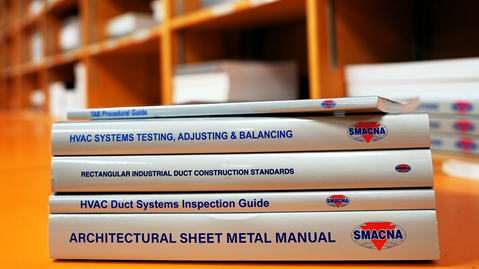Is Your Trust Fund Ready or Not?
Emergencies can come in the form of a natural disaster affecting an entire region or be brought on by something like a fire or catastrophic equipment failure affecting only your fund’s office.
Ready or not, an emergency may be just around the corner. Emergencies can come in the form of a natural disaster affecting an entire region or be brought on by something like a fire or catastrophic equipment failure affecting only your fund’s office.
Former SMACNA President Randy Novak admits that prior to the Iowa floods of 2008 the closest thing his business had to an emergency plan was a couple of chocolate bars he hid from his daughter in case he wanted chocolate. Unfortunately they didn’t help much when the water came. They aren’t likely to help your trust fund either.
A trust fund is like any other business and best practices dictate it should have an emergency preparedness and business continuity plan in place. Trust funds provide vital services. A missed check to a retiree can be the difference between buying groceries, or not. Needed medical care can be contingent on a provider being able to verify coverage with the health fund. More than a few days of downtime may seriously affect your participants’ lives.
When faced with an emergency that has rendered your fund non-operational, the best way to spring back fast is to have planned ahead. However, when the International Foundation of Employee Benefit Plans conducted a survey on emergency preparedness, only 35% of respondents reported their benefit plan had an emergency plan in place.
It is important that your fund adopt an emergency preparedness and business continuity plan designed to accommodate the unique needs of your fund and its office staff. At a minimum, plans should identify possible threats to the fund’s day-to-day operations and establish solutions for mitigating these risks. As part of the plan, the fund should also assign an individual or team responsible for recovering operations after a disruption in service and establish a process for communicating pertinent information to employees, participants, trustees, vendors and others.
For starters, some of the questions trustees need to ask are:
- What functions of the trust fund are essential and in what order should they be reestablished if disaster strikes?
- Is essential fund data backed up and can it be recovered?
- If the office or its equipment and files are destroyed or the building is unsafe to enter, can the data be accessed?
- Which fund staff are key to resuming basic operations? Do they know what to do to get things up and running again?
- Have you identified possible alternative worksites for key staff to work from on a short- term basis? Possibilities include: homes, a local union office, apprentice training center or another fund’s office.
- How will private or protected information be kept confidential under emergency circumstances?
In 2014, SMACNA worked closely with an emergency preparedness expert and developed a free model written program for its members: “Emergency Preparedness and Business Continuity.” While developed for contractors, it will help both members and trust funds prepare for, and recover from, a variety of accidents and disasters that could affect them. The model program is customizable so a fund can complete the sections trustees feel best fit their needs for emergency preparedness. You should take a look at it.
Once your trust fund has adopted an emergency preparedness and business continuity plan, don’t forget to routinely update it to reflect changes in the organization. The plan should also be periodically tested and revised as needed.
If your trust fund has a plan, please take the time to review and test it. If it doesn’t have a plan, then there is no better time to give some serious thought to developing one. Hopefully, the fund will never have to use it, but in the event it does, the time and effort to put one in place will be well worth it. It’s better than using the chocolate bar approach.
Trustees should not construe these resources as legal advice and are urged to consult with their own fund counsel to determine whether any action is permissible or advisable.
CONTENT REVIEWED:

Technical Standards
Shop the SMACNA bookstore for all technical standards, including the most recent editions and recently revised manuals.
Shop Now